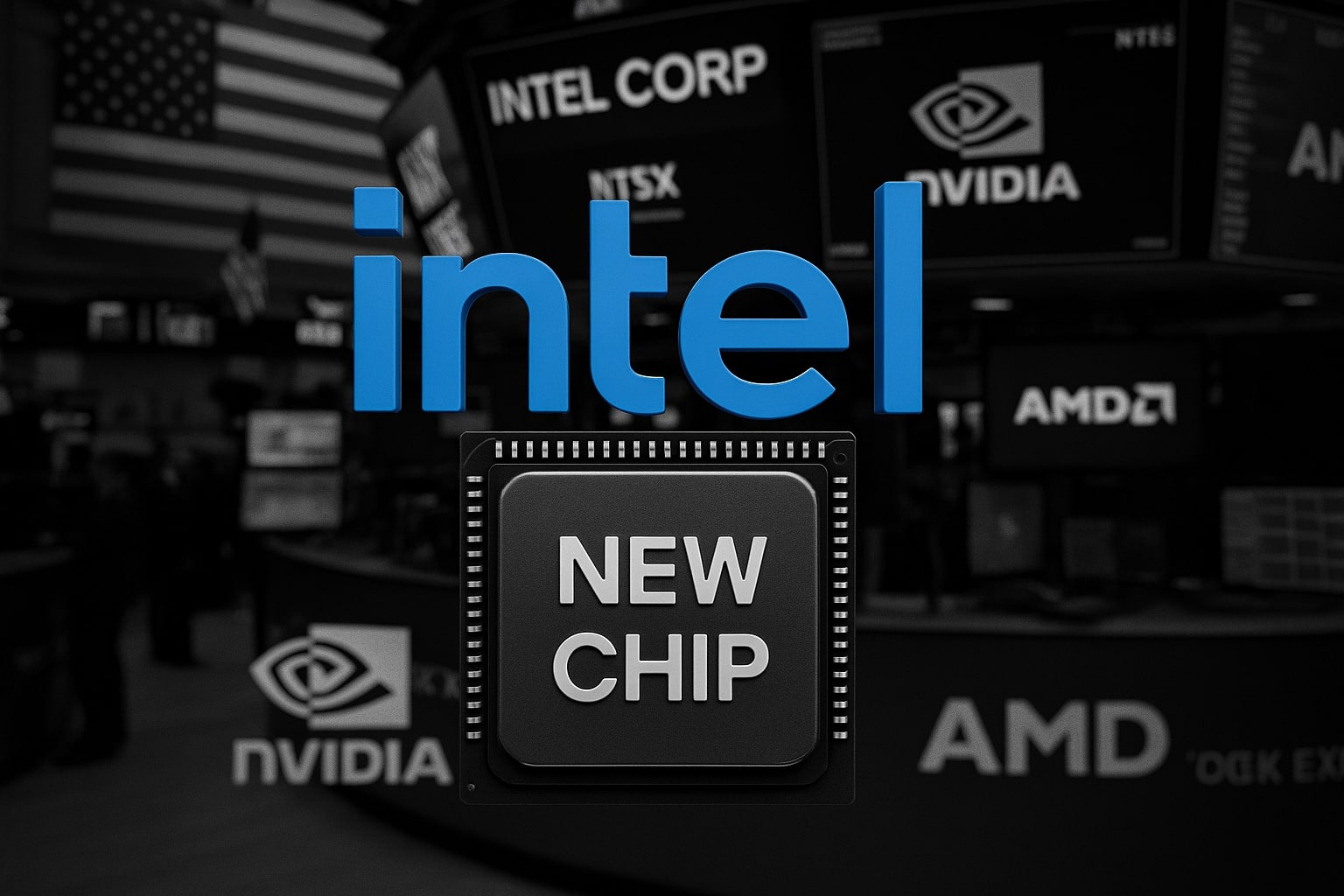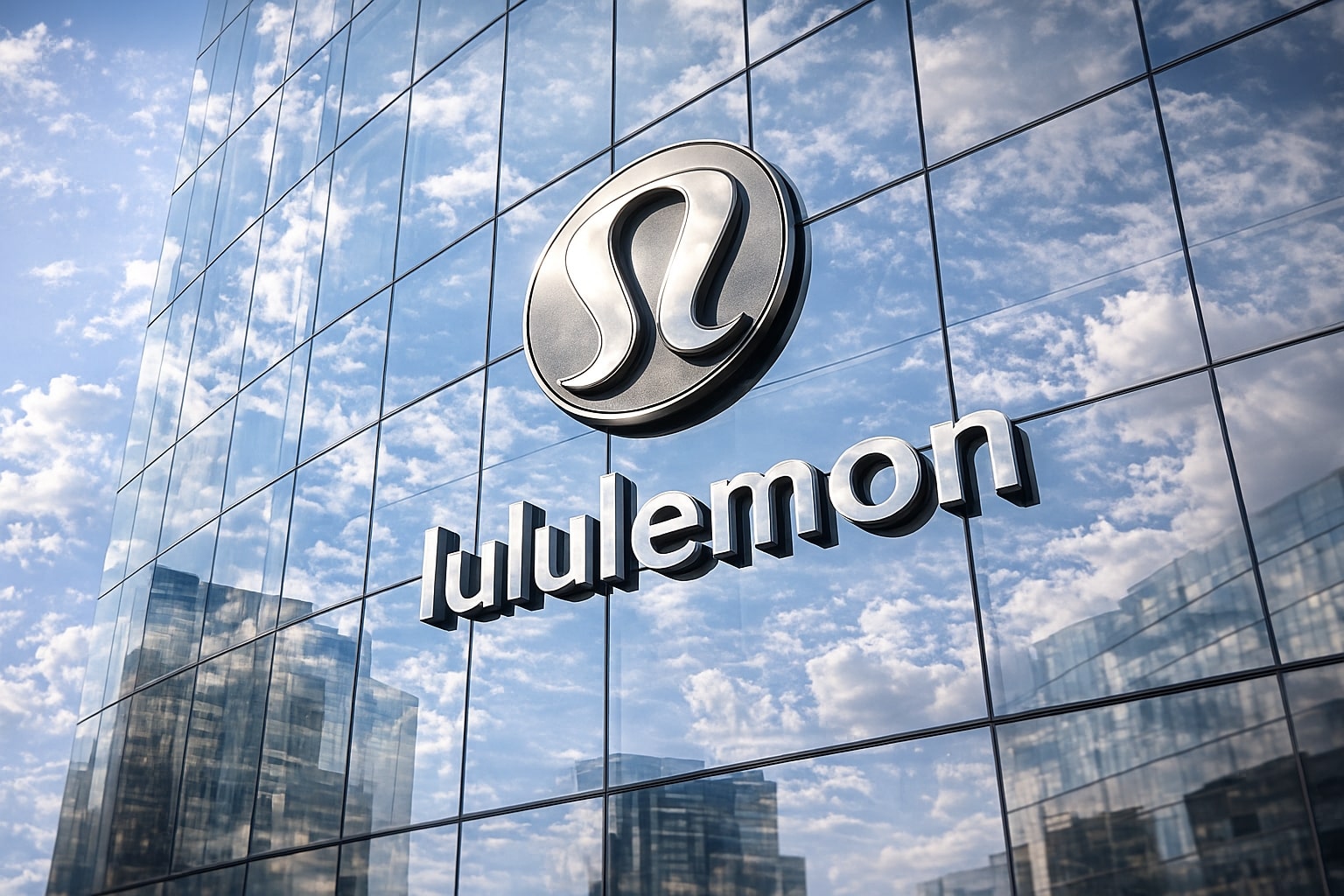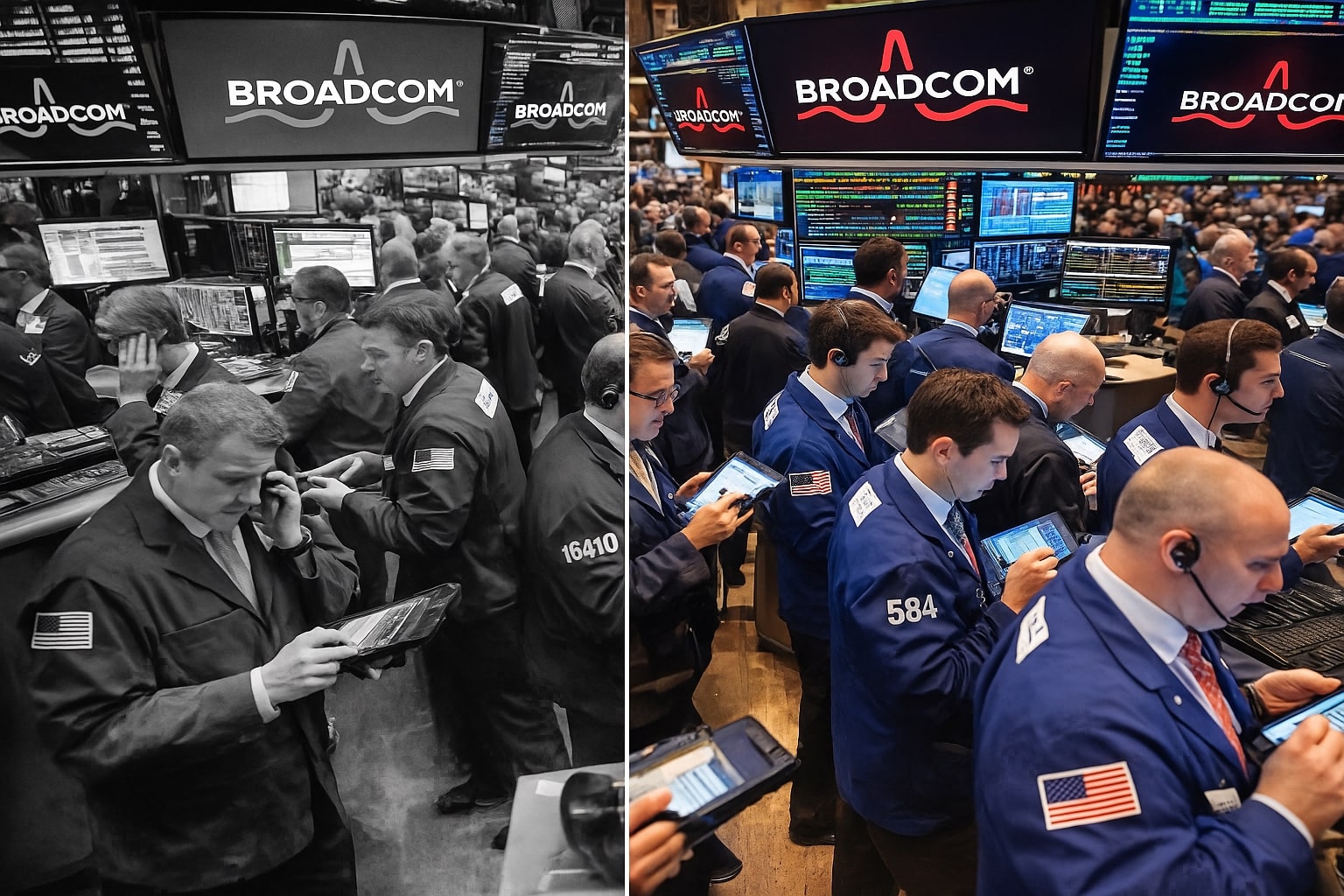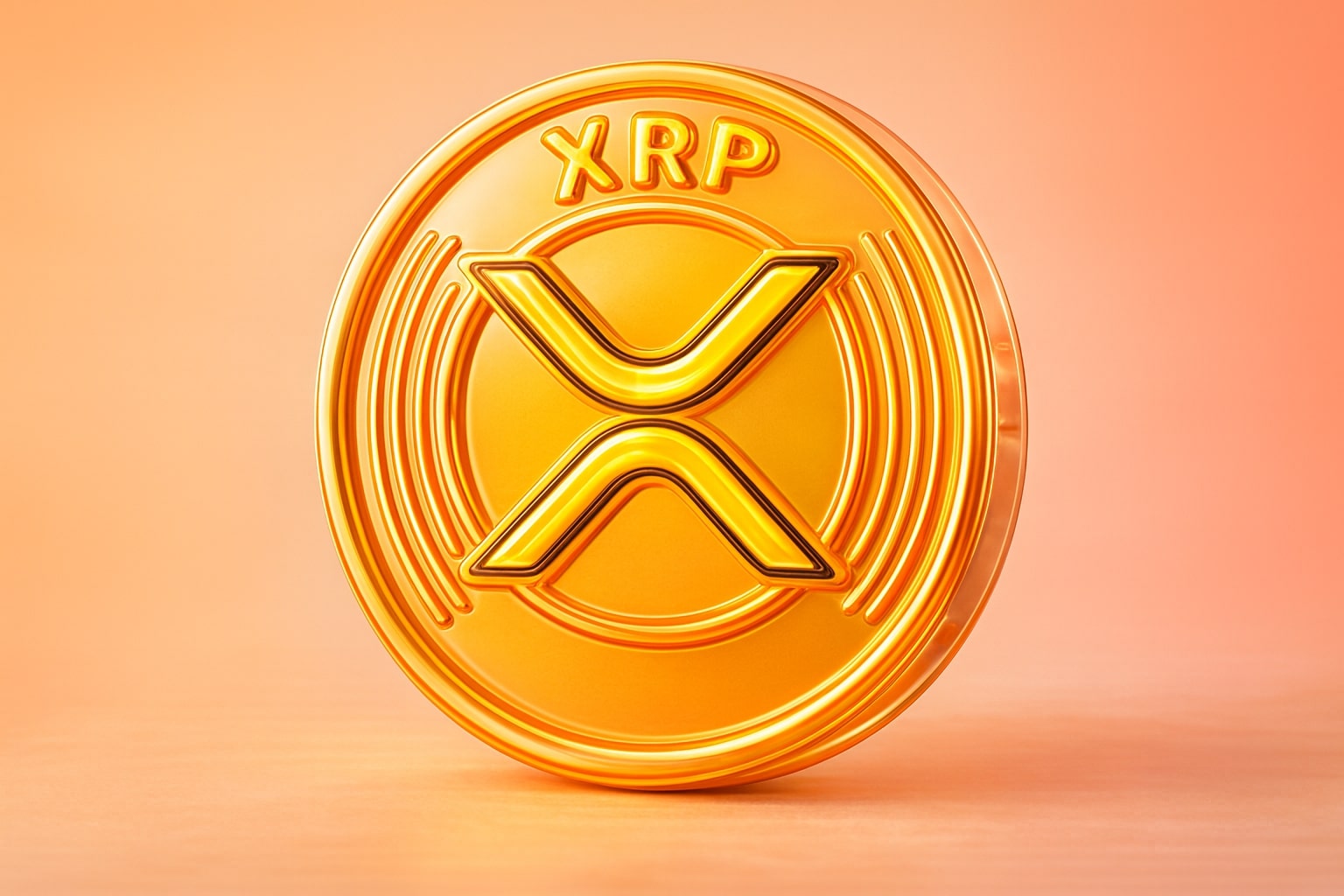
Intel Stock Price Forecast - INTC Rises to $36.29 as New “Crescent Island” AI Chip Launch Sparks Major Comeback
Intel’s latest data center GPU, “Crescent Island,” signals a bold AI resurgence, lifting shares 81% YTD as foundry expansion and cost control restore investor confidence | That's TradingNEWS
Intel (NASDAQ:INTC) — AI Ambitions and Data Center Rebound Drive a Fierce Market Comeback
Intel’s AI Reentry Shifts Market Sentiment as Shares Rise Above $36
Intel Corporation (NASDAQ:INTC) has re-emerged as one of the most closely watched chipmakers in 2025, with its stock trading near $36.29, marking an 81% gain year-to-date and over 60% in the past year. The momentum comes after years of underperformance, as Intel seeks to reclaim its place among AI and semiconductor leaders through strategic restructuring, aggressive R&D spending, and new product launches targeting high-growth segments in data centers and artificial intelligence infrastructure.
At the core of this resurgence lies Intel’s upcoming Crescent Island GPU, announced by CTO Sachin Katti at the Open Compute Summit. The chip, equipped with 160GB of memory, is optimized for AI inference workloads and cost efficiency—Intel’s direct challenge to NVIDIA (NASDAQ:NVDA) and AMD (NASDAQ:AMD) dominance. Although Crescent Island will rely on slower memory than the HBM standard used by its rivals, its focus on performance per dollar could position it as an affordable enterprise alternative in 2026.
AI Expansion Strategy Gains Momentum Under CEO Lip-Bu Tan
Since taking over, CEO Lip-Bu Tan has pushed a radical transformation of Intel’s AI roadmap. The company previously shelved its Gaudi accelerators and Falcon Shores processor, but Crescent Island marks a restart—a symbol of Intel’s intent to rebuild its AI ecosystem from the ground up. The company’s emphasis on energy efficiency and AI inference signals a pivot toward scalable, lower-cost solutions that enterprises can deploy without massive power requirements.
Tan’s broader restructuring is tied to Intel’s “five nodes in four years” initiative, aiming to regain process leadership by 2026. The company has already progressed on its Intel 3 and Intel 18A process technologies, which form the backbone of its future foundry operations. These developments feed into Intel’s plan to expand its Intel Foundry Services (IFS)—a high-stakes effort to compete directly with Taiwan Semiconductor Manufacturing Co. (NYSE:TSM) by offering advanced chip fabrication for global clients, including partnerships with Arm and U.S. defense sectors.
Financial Performance Shows Early Signs of Stabilization
Intel’s financial recovery remains fragile but promising. For the last twelve months, the company posted $53.07 billion in revenue, nearly flat year-on-year, while profitability continues to lag with a -38.64% net margin and -4.77 EPS. Despite these headline losses, Intel’s free cash flow surged nearly 100%, reflecting tighter cost control and early gains from operating discipline. The company holds $21.21 billion in cash, with total debt of $50.76 billion, translating to a 48% debt-to-equity ratio—manageable by industry standards given the capital intensity of semiconductor manufacturing.
Forward-looking estimates point to a potential earnings recovery in Q4 2025, with analysts forecasting $0.08 EPS and $13.35 billion in quarterly revenue, up sequentially from $12.86 billion in Q2. The 2026 outlook projects $0.64 EPS and $53.73 billion in sales, signaling a modest but vital turnaround in Intel’s operating momentum.
Valuation Stretches Reflect Confidence — and Risk
At a forward P/E of 56.5x, Intel trades well above its five-year average, reflecting growing investor confidence but also steep execution risk. The enterprise value of $207 billion compares to $177 billion in market capitalization, while the EV/EBITDA ratio surged above 186x, underscoring market optimism ahead of real earnings improvement. The company’s price-to-sales ratio of 3.04 and price-to-book of 1.81 remain elevated relative to historical norms, supported by speculation that Intel’s AI pivot could restore margins by 2027.
This re-rating is also supported by macro enthusiasm in the semiconductor sector. Investors are rewarding any credible restructuring narrative that includes AI exposure—a space that has lifted valuations for peers like Super Micro Computer (NASDAQ:SMCI) and Broadcom (NASDAQ:AVGO). Intel’s renewed relevance to AI hardware, combined with its foundry expansion, has reignited long-term interest from institutional investors, who now hold 65.2% of the float.
Crescent Island and the Competitive Landscape
Intel’s launch of Crescent Island represents more than a product release—it’s a strategic signal. The GPU’s architecture, built on Intel’s existing Xe3P design, will serve as a transitional platform for the company’s return to data center competitiveness. It is tailored for air-cooled enterprise servers, with performance-per-watt optimization and cost savings designed to appeal to power-sensitive clients.
Although NVIDIA continues to dominate AI computing with its Hopper and Blackwell architectures, and AMD’s MI300 series maintains strong traction, Intel’s differentiated approach targets the mid-tier AI market where affordability matters. This segment, combined with Intel’s deep enterprise relationships, could deliver steady incremental revenue rather than immediate market disruption.
Read More
-
Palantir Stock Price Forecast - Can a $440B AI Defense Powerhouse Grow Into Its $184.74 Price?
16.12.2025 · TradingNEWS ArchiveStocks
-
XRP Price Forecast - XRP-USD Drops to $1.87 as Whale Dumps $721M While XRP ETFs Quietly Cross $1B
16.12.2025 · TradingNEWS ArchiveCrypto
-
Oil Price Forecast - Oil Slide Hard; WTI CL=F Near $55, Brent BZ=F Below $60 as Market Bets on 2026 Supply Glut
16.12.2025 · TradingNEWS ArchiveCommodities
-
Stock Market Today: Dow (^DJI) 48,404 And S&P 500 (^GSPC) 6,812 Slip As Jobs Hit +64K And AVGO Sells Off
16.12.2025 · TradingNEWS ArchiveMarkets
-
GBP/USD Price Forecast - Pairs at 1.34 as Weak U.S. Jobs Data Clash with BoE Cut Bets into Year-End
16.12.2025 · TradingNEWS ArchiveForex
Stock Performance and Market Dynamics
Shares of NASDAQ:INTC have surged nearly 80% in 2025, outpacing the S&P 500’s 14.2% and rebounding from a 52-week low of $17.67 to a recent high of $39.65. The stock’s beta of 1.33 reflects heightened volatility, consistent with speculative flows across the semiconductor space. Institutional accumulation has increased following improving sentiment around AI product launches and cost management progress.
Trading volume remains robust, averaging 123 million shares over the past three months, signaling sustained retail and institutional participation. The near-term price targets range widely: analysts’ average at $27.12, the high end at $43, and the low at $14, underscoring divided views on whether Intel’s transformation can fully materialize.
Analyst Outlook and Insider Positioning
Recent analyst revisions show a cautious tone. Bank of America downgraded the stock to “underperform” with a $34 target, citing that the price may have risen “too far, too fast.” Yet many remain neutral, awaiting confirmation of customer traction in Intel’s manufacturing and AI segments. The broader Wall Street consensus sits at “Hold,” based on 2 Buys, 26 Holds, and 6 Sells, reflecting both optimism and execution skepticism.
Investors can monitor insider transactions and institutional behavior through Intel’s stock profile and insider activity page, where any significant insider buying could serve as a leading confidence indicator during this recovery phase.
Strategic Partnerships Reinforce Market Position
In addition to product innovation, Intel recently announced a partnership with Graid Technology to develop and market Virtual RAID on CPU (VROC) and SupremeRAID™ systems globally. The collaboration integrates CPU- and GPU-based RAID architectures, expanding Intel’s data infrastructure footprint and giving it access to new enterprise clients. Graid’s CEO Leander Yu called the partnership “a new phase of innovation,” combining Intel’s CPU legacy with next-generation GPU-based data optimization.
These moves align with Intel’s push to diversify revenue beyond PC chips, tapping into high-margin enterprise and AI workloads where demand remains resilient despite cyclical headwinds.
Growth Outlook and Risk Factors
Intel’s growth projections for 2026 call for a 3.3% increase in revenue and a fivefold jump in EPS compared to 2025 estimates, driven by improving efficiency, cost savings, and product mix. However, risks remain significant. Profit margins are still negative, at -3.8% operating margin and -18.6% return on equity, and competition from AMD, NVIDIA, and TSMC remains fierce.
The success of Intel’s turnaround depends on its ability to deliver on its process roadmap, execute foundry expansion without margin dilution, and convert its AI pipeline into meaningful sales. Any delay in achieving node transitions or ramping new products could quickly erode investor confidence, especially at current valuation levels.
Verdict: Intel (NASDAQ:INTC) Rated Hold with Cautious Optimism
After restructuring all available data, Intel’s situation reflects a classic recovery trade—substantial upside if execution succeeds, but meaningful risk if progress falters. The stock’s valuation, AI exposure, and financial base indicate Intel is rebuilding strength, but results must follow.
Verdict: Intel (NASDAQ:INTC) — Hold, with a short-term trading range of $34–$39 and medium-term potential toward $43, supported by its AI rebound and foundry expansion. Investors should monitor insider trends and upcoming Q3 2025 earnings for confirmation of sustainable recovery momentum.
Live Chart: View Intel Real-Time Chart
Insider Transactions: See Intel Insider Activity


















